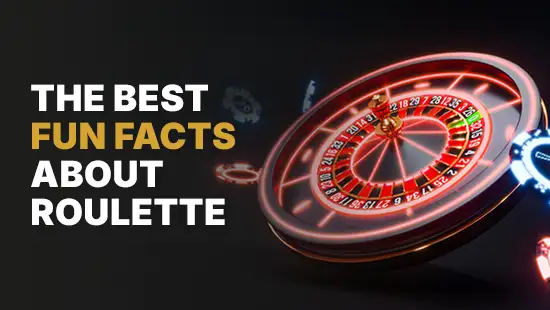

October 17, 2024, 13:00
What is Blackjack insurance?
When reviewing the rules of Blackjack, insurance is a topic that should not be overlooked. Insurance is a side bet that can be placed when the dealer has an ace as a face-up card. This option is offered to all players just before the dealer checks that his face- down card is a 10. If the dealer has blackjack, the insurance bet pays out 2:1. Players who did not take insurance lose their entire bet. If the dealer does not have blackjack, the round continues as usual.
| Topic | Details |
| Blackjack insurance | Insurance is offered when the dealer shows an ace. If the dealer eventually has blackjack, the insurance bet pays out at 2:1. |
| Amount of insurance | The bet is half the amount of the original wager. |
| Advantages of insurance | You can break even if the dealer has blackjack, especially when many 10-value cards (10s, Jacks, Queens, Kings) have been dealt. |
| Disadvantages of insurance | Odds are unfavorable (actual chance of dealer blackjack is ~30.77% vs. the implied 33.3%). |
| When to take insurance | Useful only for card counters when the “true count” is +3 or higher. Requires skill and quick calculations. |
| Tips for casual players | Avoid insurance as the odds are generally unfavorable. Basic strategy charts advise against it. Surrendering may be better in some situations. |
How does insurance work in blackjack?
The maximum amount of an insurance bet is half the amount of the original bet. This means that players have the chance to walk away without any loss. Remember, insurance is offered if the dealer shows an ace, never a 10.
You can still still maken other side bets, such as 21+3, without limiting the option to take insurance. While it’s true that side bets often have higher odds than regular bets, they also tend to be less favorable in the long run, offering more entertainment value than strategic advantages.

Advantages of taking insurance in Blackjack
Taking insurance might have some, the main one is the possibility of breaking even on a hand. This may seem attractive, as nothing will be lost when the croupier has a blackjack.
Insurance can also be beneficial if tens, jacks, queens or kings have already been dealt, as there is a greater chance that the dealer will reveal a blackjack. Remembering the cards dealt can help blackjack players greatly in deciding whether or not to take insurance. So it is important for players to remember everything that happens at the table.
Disadvantages of taking blackjack insurance
There might be some advantages to taking insurance, but there are more downsides. Since the insurance will payout 2:1, it implies that there will be approximately a 33.3% chance that the dealer will have blackjack. However, at the start of the round the dealer only has around a 30% chance that he will have blackjack. Statistically, it’s thus not the best decision to take insurance.
This percentage can be calculated by looking at the number of cards worth 10 in a deck of cards, which is sixteen in a 52-card deck. So, to calculate the probability, we divide 16 by 52 and multiply it by 100. The result is about 30.77 percent, which is lower than the implied probability. The insurance thus does not have favorable odds.
Additionally, if there are many 10-value cards dealt, these odds are further reduced. The reasoning behind this is relatively simple, as there are fewer 10's in the deck than the dealer can draw. In short, if a player chooses to secure his hands, the odds will be against him, except in some cases.
When to take the insurance?
The only time when it can be beneficial to insure your blackjack hands is when you are counting cards. This strategy has been explained before, but it basically consists of keeping track of the high or low cards that have been dealt. At the beginning of the round, the count is 0, high cards deduct 1 and low cards add 1 up. Mid-range cards (7, 8 and 9) do not affect the count.
This number is called the "running count". However, this is not the value that is important. You must take this number and divide it by the total number of decks being used, to find the "true count". When the "true count" is 3 or higher, it is recommended to take insurance.
Although in theory this may seem very simple, card counting requires a lot of practice and experience. It is necessary to always keep track and to perform quick mathematical calculations, while avoiding distractions and maintaining the basic blackjack strategy.
However, once you master card counting, you can gain an advantage over the house. This applies not only to taking insurance at the right time, but also to other areas of the game. Different counts can tell you a lot about the cards left in the deck, and this allows you to change your game play to get the best odds of winning. That said, card counting is based on probability and does not always guarantee a win.
Tips for using insurance in blackjack
At PepperMill Casino we say the best advice for using insurance is to avoid using it, as many times this side bet does not offer you odds high enough to justify the risk. Of course, this does not apply to expert card counters, because they can accurately track when the advantage changes in their favor.
For casual players who do not count cards, following a basic strategy chart can help increase the chances of succeeding in a hand. Interestingly, the basic strategy also suggests that a player should never opt for insurance in blackjack. However, there are certain cases where players are advised to surrender their hand, only if they are allowed to do so.
If you want to put in practice your skills at blackjack and maybe use insurance, do not hesitate and try it at First Person Blackjack.


